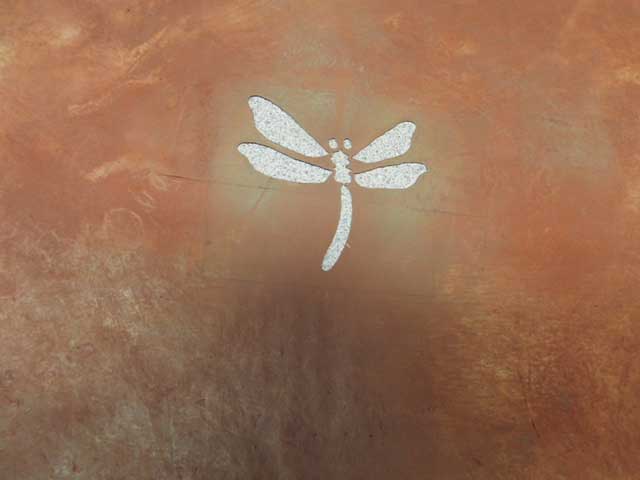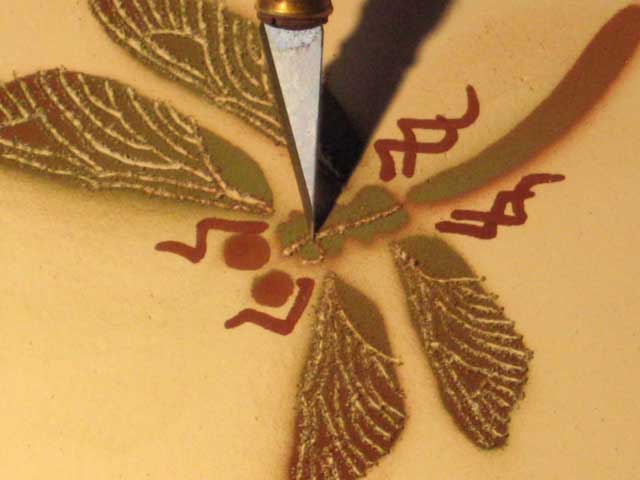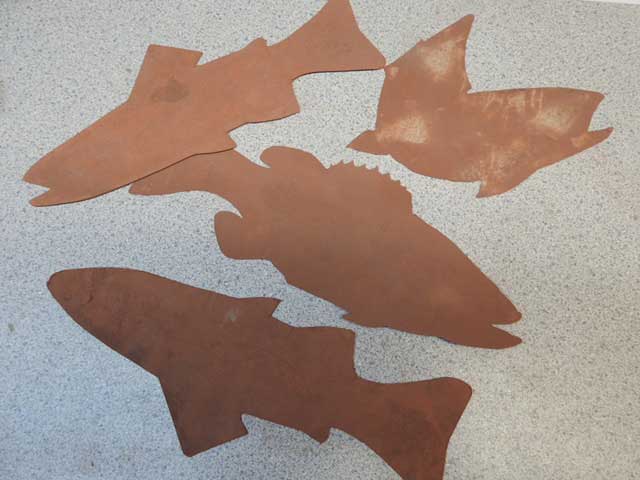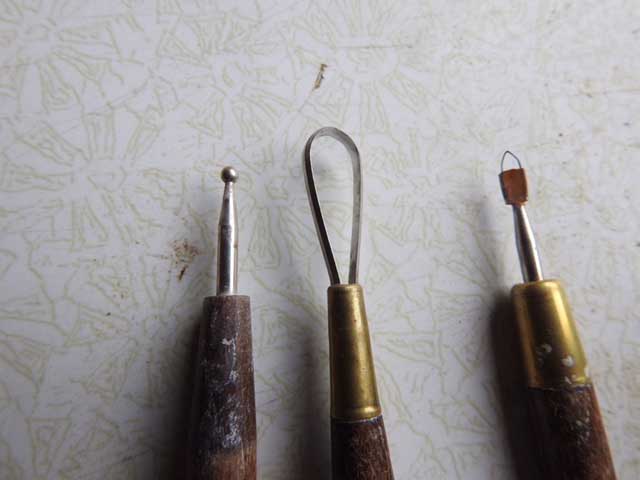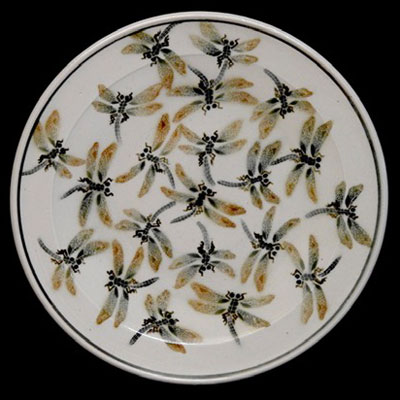The Process
The artist shares tips, techniques and lessons learned.
I suggest alot of testing. It’s better to have a bad test than a ruined piece that you’ve spent a lot of time on.
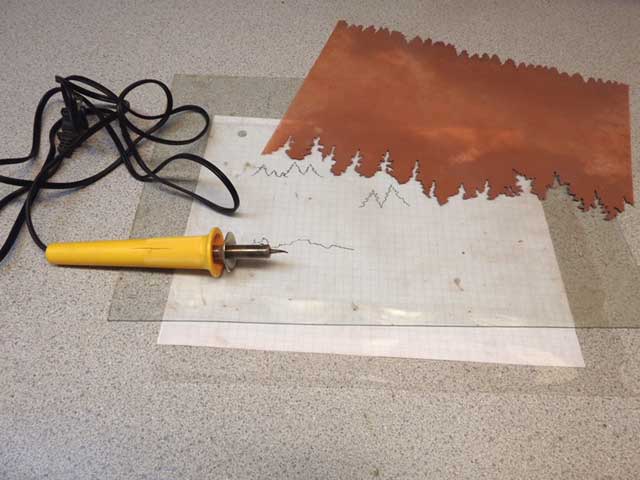
Stencils
I make stencils out of acetate placed on a pane of glass, with a line drawing underneath the glass. I use a fine tipped electric hot tool similar to a wood burner to cut through the acetate. I use a pen with a fairly coarse line so as the lines of the drawings are comparable to the tip of the stencil burner.
Brush Work
Many of my images also include brush work done with a variety of brush types and sizes. I carve lines with a small fine V-shaped wire tool. Leaves are cut with a medium sized loop trimming tool.
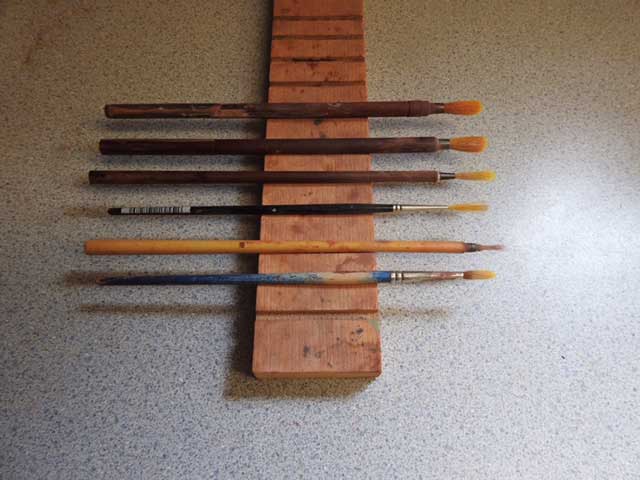
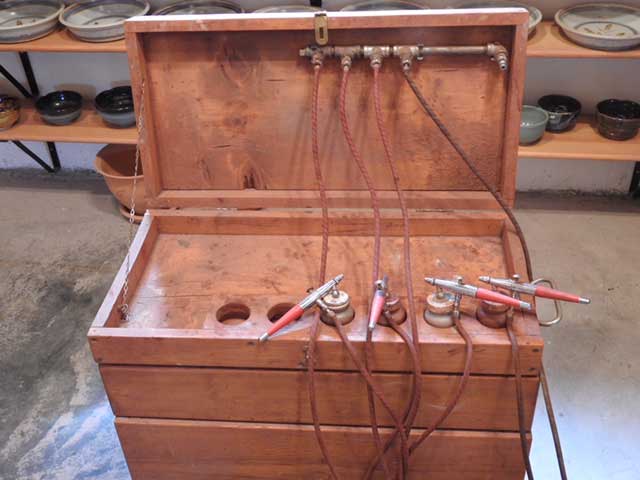
Airbrush
For my airbrush work, I have a bank of four airbrushes on a pipe manifold attached to an air compressor. I use an over glaze technique, spraying pigments onto a chun clear glaze over a porcelain clay body.
Stamps
Stamps are sculpted out of porcelain using small wooden and plastic sculpting tools. Then bisque fired. One must take care to sculpt the negative of the impression you want on the object you are decorating. Careful attention to the condition of the drying clay is important. Clay too wet may overly distort object. If the object is too dry the impression may be to faint or the piece may crack.
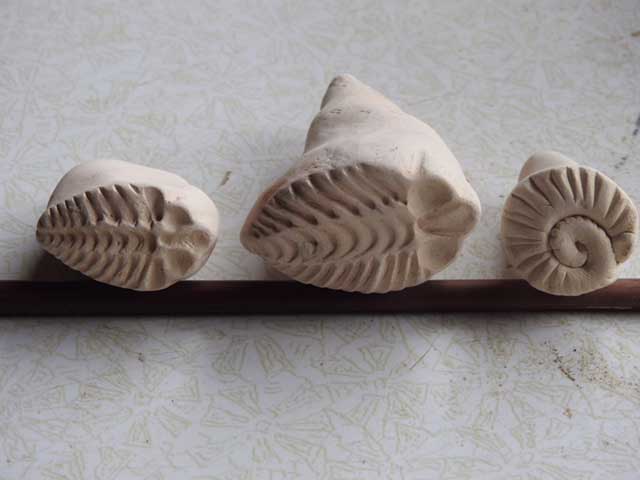
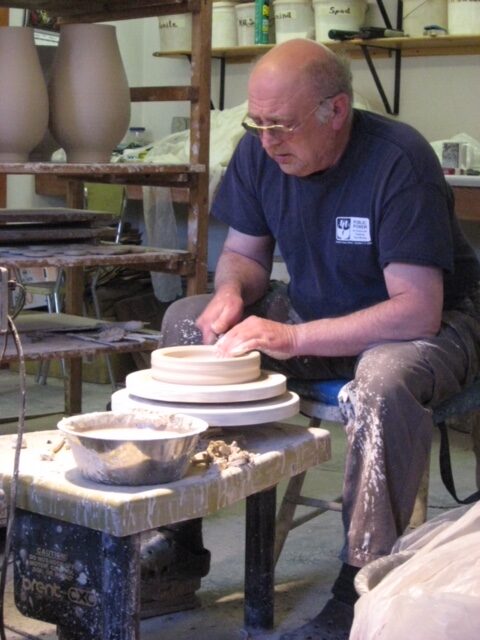
Pigments & Glazes
I will offer tips instead of formulas.
Developing over glaze oxide at this time is a easier process than in the early 70’s as there’s many stains, and ready made under glazes and the like. I devised my pigment colors out of iron oxides, chrome, cobalt carbonate, and rutile. There is usually these or variations at most schools.
Chrome for instance is very refractory. So in a solution of 50% base glaze and 50% water I add a small percentage of gerstly borate to help melt the chrome. Likewise with iron which tends to be naturally fluxed, I add some earthen ware clay to make it slightly more refractory. For cobalt I add a small percentage of iron and chrome to reduce the strength of the color.
In all cases I use a measuring device, usually a 100cc tube, to make the mixture of consistent strength. I use a gram scale to measure the oxides or stains. I don’t glaze fire at cone 5 or in electric kilns. But a clear glaze that doesn’t move much should work ok.
